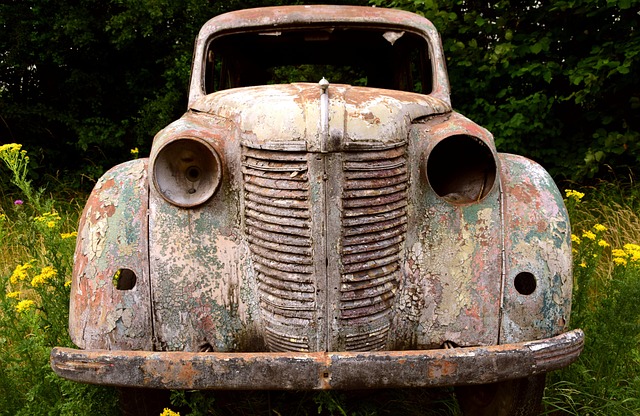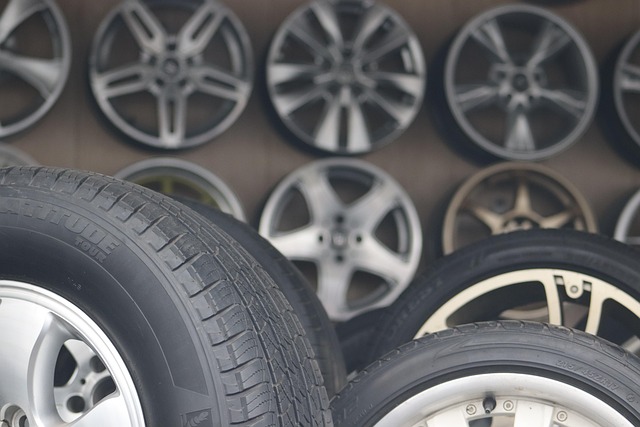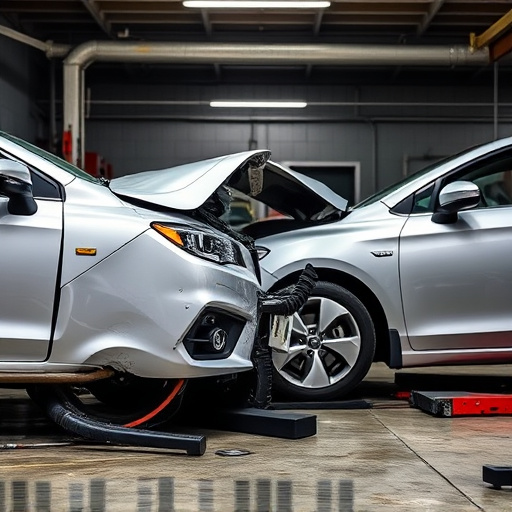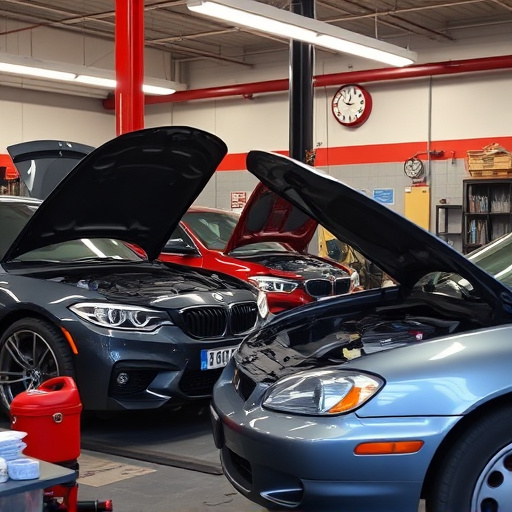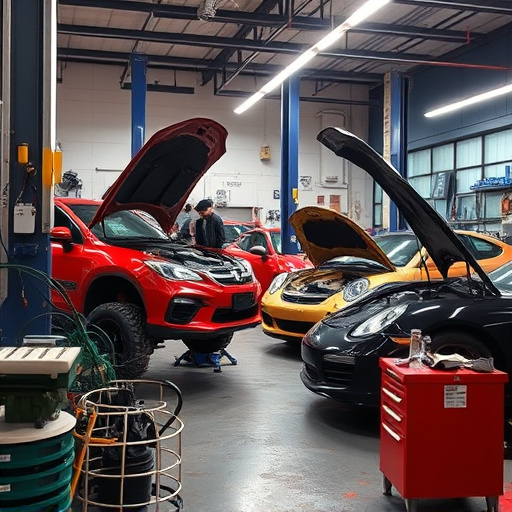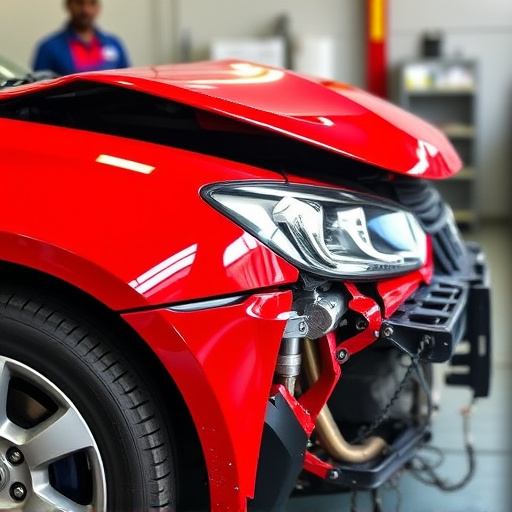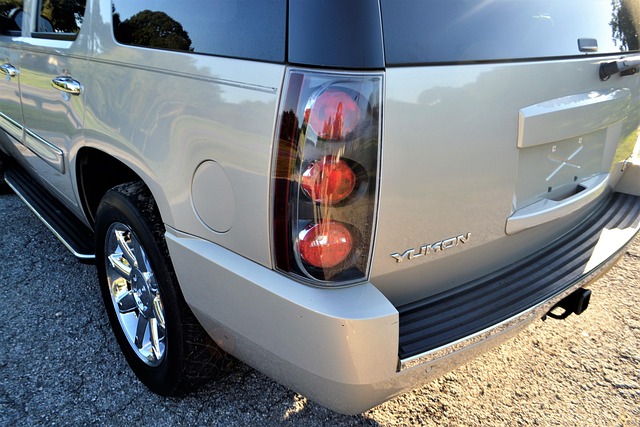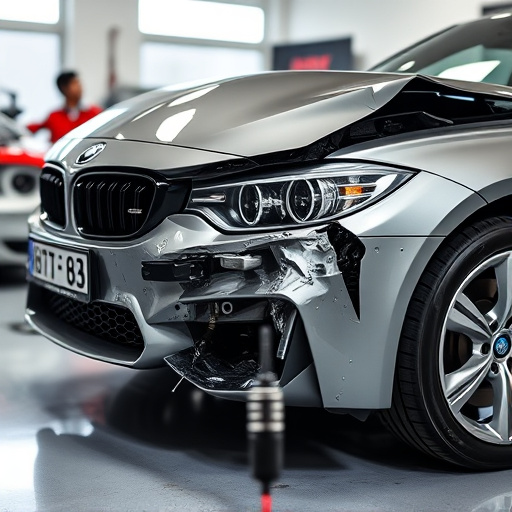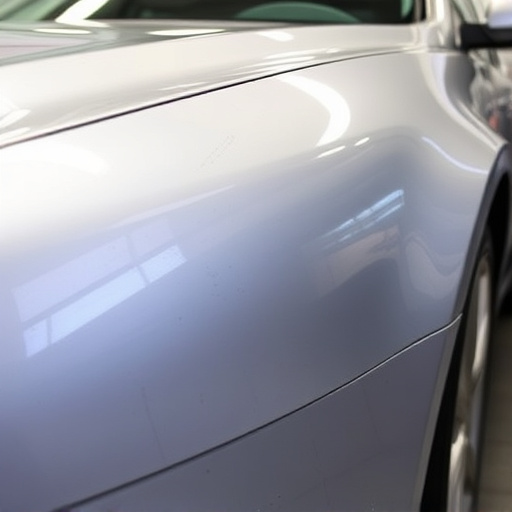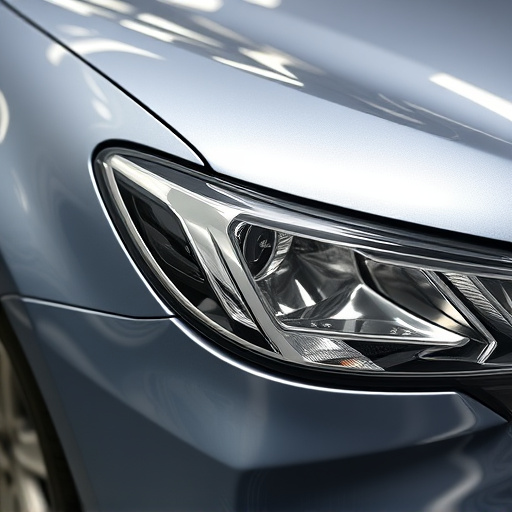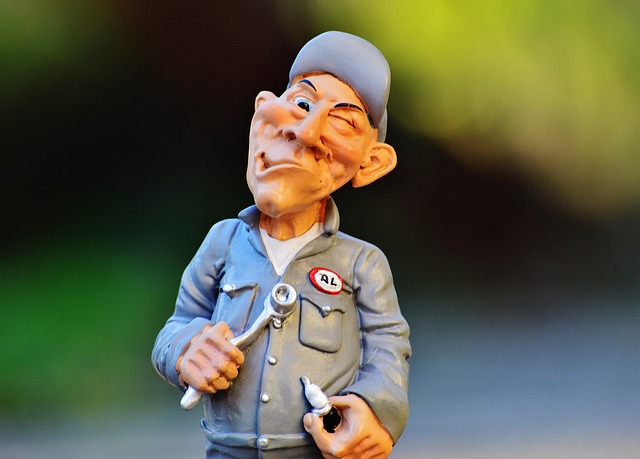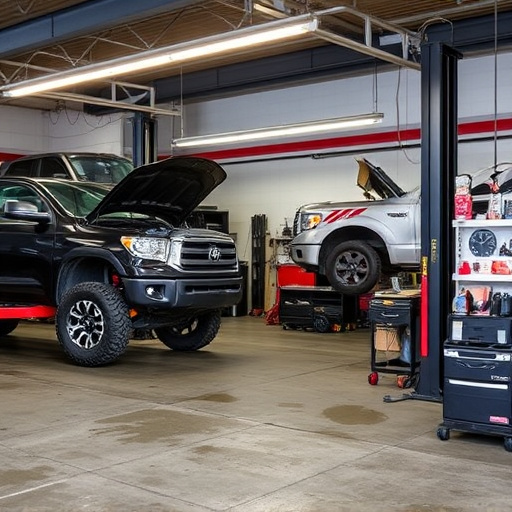Automotive paint types, particularly glossy finishes, significantly impact vehicle aesthetics and protection. Glossy paints shield against UV rays, reduce fading, and enhance durability, repelling dirt for longer-lasting results. The right gloss level depends on aesthetic choices, vehicle use, and environmental conditions. Higher gloss levels create a dramatic effect suitable for show cars, while lower gloss levels offer better imperfection hiding and scratch resistance for daily drivers. Auto body experts recommend tailored gloss based on surface condition and owner preferences.
In the realm of automotive aesthetics, understanding the role of gloss in various paint finishes is paramount. This article delves into the intricate details of different automotive paint types and their relationship with gloss, a critical component shaping vehicle appearances. From matte to mirror-like surfaces, we explore how gloss enhances or muffles light reflection, impacting visual appeal and durability. Learn about the functional benefits, considerations for selection, and the ultimate guide to achieving your desired automotive finish.
- Understanding Automotive Paint Types: An Overview
- The Function and Benefits of Gloss in Paints
- Choosing the Right Gloss Level for Your Vehicle Finish
Understanding Automotive Paint Types: An Overview

Automotive paint types are a crucial aspect of vehicle aesthetics and protection. The market offers various finishes, each designed for specific purposes and aesthetics. These paints are categorized based on their composition, application methods, and durability. One key distinction lies in glossy versus matte finishes, with gloss providing a smooth, shiny surface that enhances the car’s visual appeal.
Understanding automotive paint types is essential for auto body restoration and vehicle repair enthusiasts. Different paint jobs require specialized techniques, such as frame straightening, to ensure perfect alignment and a seamless finish. Glossy paints, in particular, demand precision during application to maintain their vibrant and indelible finish, making them a popular choice for those seeking a sleek, modern look in their vehicle repairs or custom auto body restoration projects.
The Function and Benefits of Gloss in Paints
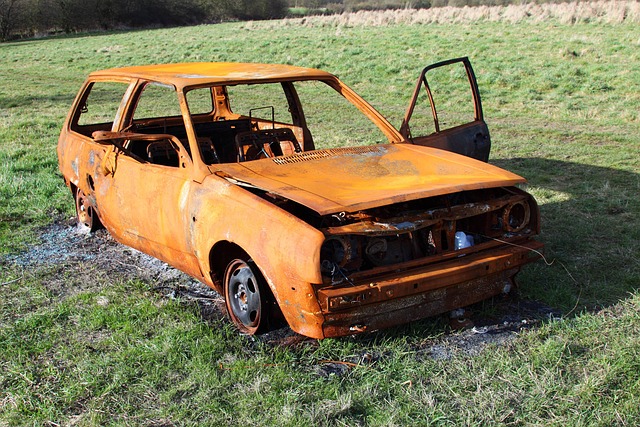
In the realm of automotive paint types, gloss plays a pivotal role in defining the finish and aesthetics of vehicles. Beyond merely adding a shiny appearance, gloss serves as a protective layer that safeguards the paint job from various environmental factors. It acts as a barrier against UV rays, preventing premature fading and discoloration, which is particularly crucial for maintaining the vehicle’s original look over time. Moreover, gloss enhances the overall smoothness and durability of auto body painting, making it more resistant to scratches and chips, thereby extending the life of the paint job and reducing the need for frequent touch-ups or auto repair services.
The benefits of gloss extend beyond protection and aesthetics. It also contributes significantly to the longevity of tire services and other exterior components by creating a smooth, non-porous surface that hinders the adherence of dirt, grime, and harmful substances. This not only preserves the paint job but also ensures that other critical parts of the vehicle remain clean and well-maintained, ultimately enhancing the overall performance and safety of auto repair services.
Choosing the Right Gloss Level for Your Vehicle Finish

When it comes to selecting the ideal gloss level for your automotive paint finish, the choice is both an art and a science. It’s important to consider the vehicle’s intended use, its environment, and personal aesthetic preferences. For instance, higher gloss levels reflect light more, creating a sleek, vibrant look, perfect for show cars or those seeking a dramatic finish. Conversely, lower gloss levels offer a softer, more subtle sheen, which can be preferable for daily drivers exposed to varying weather conditions, as it hides minor imperfections better.
Automotive body shops and car scratch repair experts often recommend tailored gloss levels based on the vehicle’s surface condition and the owner’s goals. For example, an auto frame repair might call for a higher gloss to showcase the repairs, while an ordinary paint job on a family car could benefit from a lower gloss that’s easier to maintain and less prone to showing swirls or scratches, even without professional car scratch repair treatments.
Automotive paint types play a critical role in protecting and enhancing vehicle finishes. By understanding the function and benefits of gloss, car owners can make informed decisions when selecting the right level for their cars. Whether it’s a high-gloss finish for a sleek, mirror-like look or a low-sheen option for a more subtle appeal, choosing the appropriate gloss level can significantly impact both aesthetics and durability. Incorporating the right gloss into automotive paint types ensures not only a visually appealing exterior but also extended protection against environmental factors, ultimately preserving the vehicle’s value and integrity over time.
